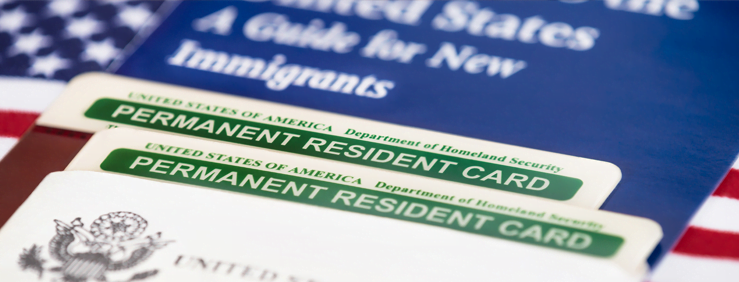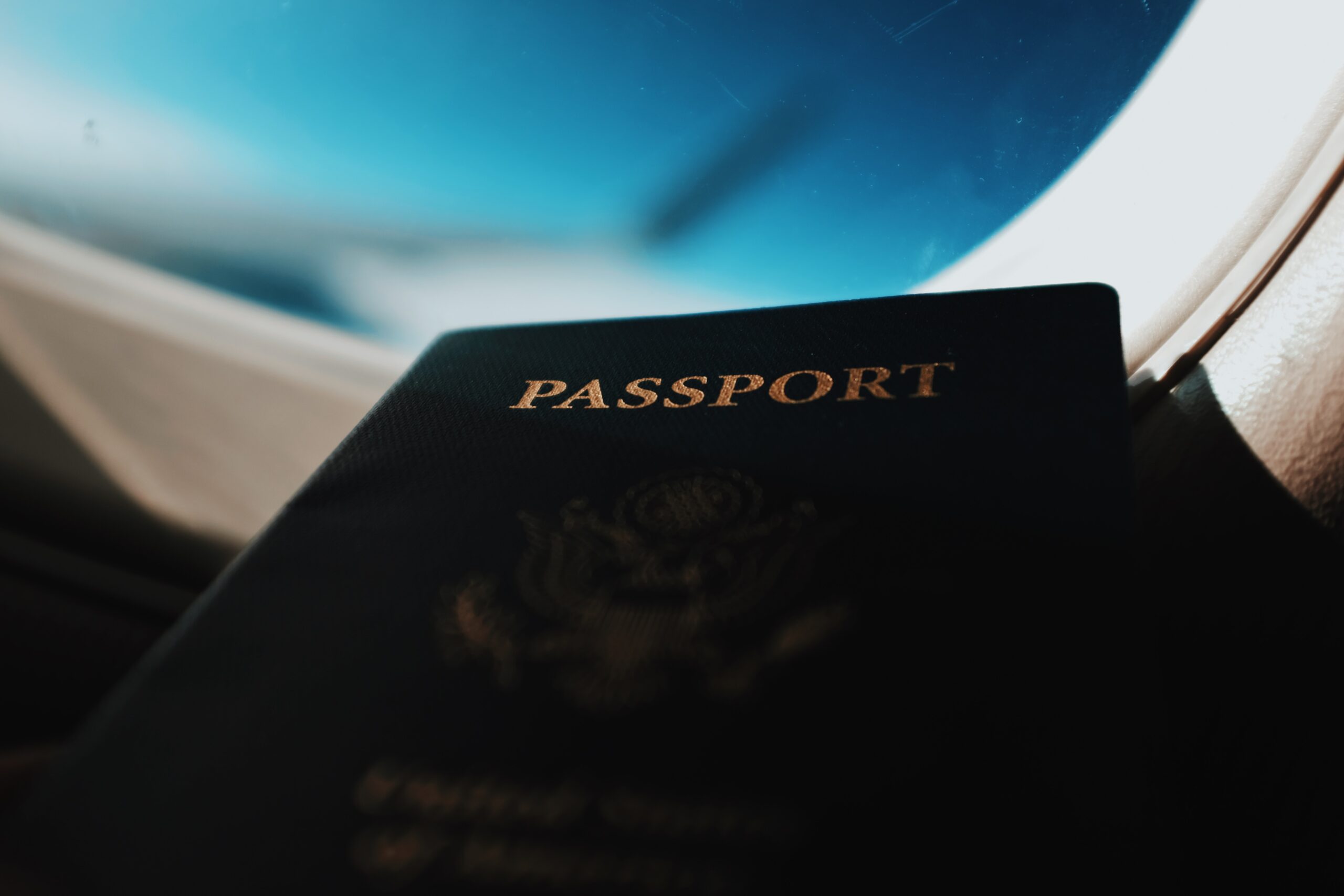Welcome to our detailed guide to the O-3 Dependent Visa Application Process. This blog aims to assist O-1 visa holders and applicants by providing a clear path for navigating the hurdles of obtaining O-3 visas for their dependents (spouses and unmarried children under age 21). From helping you understand the documentation your family needs to navigate O-3 visa complexities, we’re here to answer your most pressing questions and guide you through each step of the way with clarity and support. Whether you’re applying from abroad or within the U.S. let’s navigate this journey together.
Please remember that this article does not provide any legal advice and if you would like to discuss your immigration situation, please speak with the immigration attorney. If you would like to speak with our lawyer, please contact us here.
Understanding the O-3 Dependent Visa: An Overview
The O-3 Dependent Visa allows qualifying family members of O-1 principal visa holders of extraordinary ability to accompany them in the United States as dependents. Once issued, the O-3 visa allows family members of the O-1 principal applicant to remain in the United States for as long as the principal remains in legal status. Accordingly, O-3 visa holders are subject to the same period of admission and limitations as the O-1 principal.
Purpose and Eligibility
The primary purpose of the O-3 visa is to reunite O-1 visa holders with their loved ones, allowing them to accompany or join the principal visa holder during their stay in the United States. To qualify for an O-3 visa, individuals must demonstrate a bona fide familial relationship with the O-1 visa holder, either as a spouse or unmarried child under 21 years of age. It’s important to note that only legally married spouses and biological or adopted children are eligible for dependent status.
Privileges and Limitations
While O-3 visa holders enjoy certain privileges, such as the ability to reside and study in the United States, they are subject to certain limitations. Unlike O-1 visa holders, O-3 dependents are not authorized to work in the U.S. However, they may engage in part-time or full-time study without obtaining additional authorization from the U.S. Citizenship and Immigration Services (USCIS).
Processing and Duration
The processing of O-3 visa applications typically occurs concurrently with the O-1 visa application procedure. However, individuals may also apply for an O-3 visa after the principal O-1 visa holder’s approval, either from outside the U.S. through consular processing or within the country through a change of status with the U.S. Citizenship and Immigration Services (I-539, Application to Extend/Change Nonimmigrant Status). The duration of O-3 visas is contingent upon the validity period of the principal O-1 visa, allowing dependents to accompany the primary visa holder for the duration of their authorized stay in the United States.

Documentation Requirements for O-3 Visa Dependents
When applying for an O-3 visa, ensuring that all necessary paperwork is accurate and complete is crucial for a successful application procedure. Below, we outline the essential documents required for O-3 visa dependents:
- Passport:
- Each O-3 visa dependent must possess a valid passport from their home country.
- Form DS-160 (only if applying at a U.S. Consulate or Embassy):
- This is the Online Nonimmigrant Visa Application form, which must be completed and submitted for each O-3 dependent.
- Form I-539 (only if applying through USCIS for a change of status):
- Required for applicants opting for a change of status with USCIS instead of going through the Consular route. This involves submitting Form I-539, Application to Extend/Change Nonimmigrant Status, along with all necessary documentation and fees to USCIS. It typically requires the applicant to attend a biometric appointment where their photo and fingerprints are taken and may take several months for approval.
- Visa Application Fee:
- The visa application fee must be paid for each O-3 visa dependent.
- Form I-797 Approval Notice (only if applying separately after the principal’s approval):
- A copy of Form I-797, Notice of Action, approval notice which demonstrates the approval of the principal O-1 visa holder’s petition, is required for each O-3 visa dependent during the application process.
- Proof of Relationship:
- Documentation establishing the familial relationship between the O-1 visa holder and the O-3 visa dependents is essential. This may include marriage certificates for spouses or birth certificates for children and certified English translations as applicable.
- Photographs:
- If applying at a U.S. Consulate or Embassy, recent passport-sized photographs of each O-3 visa dependent are necessary.
- Financial Support Records:
- Evidence of the O-1 visa holder’s financial ability to support their dependents during their stay in the U.S. may be required. This could include bank statements, employment verification letters, or other financial documents.
- Medical Examination (if applying at a U.S. Consulate or Embassy):
- Depending on the country of origin, some O-3 visa dependents may be required to undergo a medical examination by an approved physician.
While the core paperwork requirements for O-3 visa dependents remain consistent, specific requirements may vary depending on whether the application is submitted from outside the U.S. through consular processing or within the U.S. through a change of status with USCIS. It’s essential for applicants to carefully review the requirements provided by the U.S. embassy or consulate processing their application or by the U.S. Citizenship and Immigration Services (USCIS) to ensure compliance and a smooth application procedure.
Applying from Outside vs. Change of Status: What You Need to Know?
As mentioned above, when applying for an O-3 visa, individuals have two primary options: applying from outside the U.S. through consular processing or applying for a change of status within the U.S. Each method has its own set of requirements and considerations:
- Consular Processing: When applying from outside the U.S., applicants must submit their documentation to the U.S. embassy or consulate in their home country. This procedure typically involves attending an in-person visa interview.
- Change of Status: Alternatively, applicants can apply for a change of status within the U.S. by submitting Form I-539 to USCIS. However, it’s important to note that this process doesn’t allow dependents to travel abroad and re-enter in O-3 status. Only a visa stamped in the passport permits O-3 holders to freely travel abroad and re-enter the U.S. If dependents don’t need to travel abroad during the O-1 period, they can choose to opt out of this process.
While the core documentation requirements for O-3 visa dependents remain consistent, there may be slight variations in the application procedure depending on the method chosen. It’s crucial for applicants to carefully review the specific requirements provided by the relevant authorities to ensure a successful application process.
Legal Relationships and O-3 Visa Eligibility
As mentioned above, to qualify for an O-3 visa, individuals must establish a bona fide familial relationship with the primary O-1 visa holder. This typically includes legally married spouses and unmarried children under the age of 21.
It is crucial to note that only legally recognized marriages and biological or adopted children are eligible for dependent status. Applicants must provide evidence, such as marriage certificates or birth certificates, to validate their relationship with the principal O-1 visa holder.
Understanding the legal requirements and ensuring that all necessary files are in order is essential for a successful O-3 visa application.
The Consular Visa Interview Process for O-3 Dependents
This step serves as a vital opportunity for dependents to showcase their eligibility and accompany the O-1 principal visa holder in the United States.
Key Highlights:
🔍 Insightful Inquiry: At the interview stage, Consular officers delve into the applicant’s relationship with the O-1 visa holder, the purpose behind their U.S. visit, and the O-1 visa holder’s financial ability to support their stay.
🌟 Strategic Preparation: Success hinges on thorough preparation. Familiarizing oneself with visa requirements, compiling essential documentation, and rehearsing responses to potential interview questions are essential strategies for a triumphant interview.
🌍 Global Connections: Applicants are encouraged to highlight strong ties to their home country and previous U.S. visits, emphasizing their intention to comply with visa regulations and return home after their authorized stay.
Amidst the interview’s intensity, displaying genuine familial bonds with the O-1 visa holder and providing articulate and truthful responses are pivotal. By mastering these elements, applicants can confidently navigate the interview process and be well on their way to a fulfilling journey to the United States.
Marital Changes After O-1 Approval: Impact on O-3 Dependents
Marriage dynamics can shift even after O-1 visa approval, affecting O-3 spousal visa status. Understanding the implications and taking proactive steps is crucial for maintaining legal compliance and stability.
Navigating Changes:
🔹 Post-Approval Marriage: If the O-1 visa holder marries after approval, their spouse can still apply for an O-3 visa by promptly submitting the marriage certificate.
Impact:
🔹 Security and Stability: Addressing marital changes swiftly ensures continuity and stability for O-3 spouses in the United States.
🔹 Legal Compliance: Updating visa status promptly is essential to adhere to regulations and avoid complications.
Guidance:
🔹 Consulting Experts: Seeking advice from immigration professionals helps navigate visa complexities effectively.
🔹 Proactive Measures: Taking proactive steps mitigates challenges and maintains legal status for O-3 dependents.
Costs Associated with O-3 Visa Applications: A Detailed Guide
When applying for an O-3 visa, applicants should be aware of the following costs:
Consular Process:
- DS-160 Visa Application Fee: Non-refundable fee varying by country.
- Medical Examination Fee: If needed, varies by physician.
- Travel Expenses: Including transportation, accommodation, and meals.
- Legal Fees: If seeking assistance from immigration professionals.
- Miscellaneous Expenses: Such as document translation and postage.
Change of Status with USCIS:
- Form I-539 Application Fee: Non-refundable fee varying by application type.
- USCIS Biometric Services Fee: If required, for fingerprinting.
- Medical Examination Fee: If needed, varies by physician.
- Travel Expenses: Including transportation, accommodation, and meals.
- Legal Fees: If seeking assistance from immigration professionals.
- Miscellaneous Expenses: Such as document translation and postage.
Understanding and budgeting for these costs is crucial for ensuring a seamless O-3 visa application procedure. It’s imperative that applicants stay vigilant and regularly check the Department of State or USCIS website to verify fee amounts, especially in case of any updates or increases.
If you are interested in determining your eligibility for the O-1 Visa, EB-1 or EB-2 NIW kindly complete this free brief screening, and our team of attorneys will car
FAQ
Do I need to provide documents for my dependents during the O-1 visa application process?
Initially, for an O-1 petition filed from outside the U.S., documents for O-3 dependents are not required. This aligns with the process where dependents typically apply for O-3 visas at the consulate once the principal O-1 applicant’s petition is approved by USCIS. Information and documents for dependents become necessary after the O-1 approval by USCIS, especially if dependents are in the USA with the O-1 visa applicant, in which case the I-539 change of status application is often filed concurrently with the O-1A petition.Why are my spouse/children not mentioned in my O-1 petition?
When applying from outside the U.S., the O-1 petition primarily focuses on the primary applicant. This approach aligns with the process where dependents are processed separately and are linked to the O-1 approval. Typically, dependents would apply for their visas once the O-1 petition is approved by USCIS, ensuring a streamlined and efficient application process for all parties involved.Do we have to attend the visa interview together?
If the family members would like the O-1 visas printed on their passports after USCIS approval, then they would typically attend the O-1 interview together at the US Consulate at the same time. The benefit of getting the visa printed in the passport is that it allows them to travel abroad freely and re-enter with the O visas. The change of status does not allow foreign travel or re-entry. Therefore, while it’s not mandatory to attend together, it may be beneficial for dependents to accompany the O-1 visa holder to the visa interview. This ensures that all family members receive their visas printed on their passports, enabling them to freely travel abroad and re-enter with the O visas.









